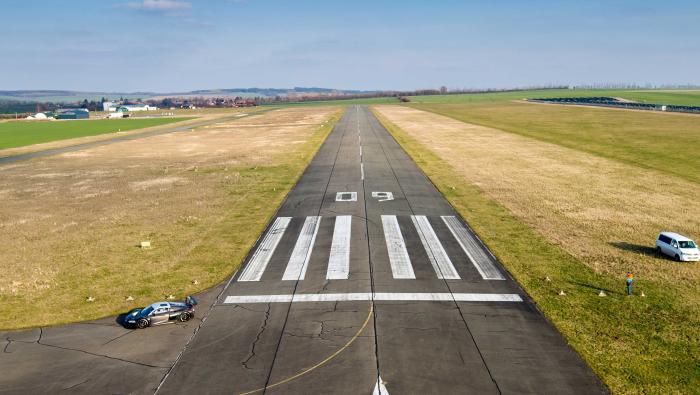Deep within every accident are messages for improving safety, but some mishaps are particularly provocative and have far-reaching implications. The runway overrun of a Challenger 600 at Teterboro Airport (TEB) in February is one of those events.
The rejected takeoff of the Challenger 600 and its subsequent slide into a warehouse loading dock located outside the airport boundary, across a busy highway that parallels TEB’s northern boundary, provoked an FAA investigation that is destined to peel back many layers of the charter brokerage onion. It also should compel professional aviators to examine what is happening to the excellent culture of safety that traditionally characterizes the business aviation community.
While the captain slowed the aircraft sufficiently to prevent fatalities to the eight passengers and three crewmembers on board the Challenger and to several people in passing automobiles and at the warehouse, a number of people sustained serious injuries and a damaging fire ensued. In addition, the political ramifications of the accident are significant. Politicians and local anti-airport activists quickly cited the crash as a reason to curtail business jet operations at TEB.
Charter Operations
Until the NTSB and the FAA release their findings, the cause and circumstances surrounding the accident remain the stuff of speculation. Nevertheless, certain aspects of the mishap are emerging, and like an onion that is being peeled, a pungent odor is beginning to fill the air.
For nearly two days after the accident, FAA officials were unable to determine what entity was responsible for the flight. As reported in The New York Times, the Challenger 600 was chartered from a company in Florida, which was working with another company in Alabama.
A subsidiary of the Alabama company apparently held the air carrier certificate under which the Challenger was being operated. Claiming that the Florida operator lacked the required authorizations to conduct the flight, the FAA issued a “cease and desist” order against it and required the company to stop operating as an air carrier.
Many experts probably will be hard at work for many months attempting to prove which company had operational control of the Challenger flight that morning at TEB
and what FARs were applicable. The Florida company argues it was in compliance with applicable regulations because it was conducting the flight for the Alabama-based company, whose subsidiary was a certified air carrier with appropriate authorizations. According to a spokesperson for the Florida operator, it simply provided pilots and maintenance to the Alabama company’s subsidiary that held the certificate on which the Challenger 600 was listed.
In general, the FAA is troubled by the labyrinth of arrangements and deals that characterize some flights that are offered to charter customers. The agency feels too many trips are brokered by agents who possess little more than a cellphone and a list of contacts, while technically any company advertising that it supplies air transportation to the public for hire must have an air carrier certificate issued by the FAA or have a contractual arrangement with the air carrier to sell on its behalf. [A detailed explanation of DOT policy related to charter brokers can be found at www.nbaa.org–Ed.] The agency also believes that too many so-called charter flights are conducted via time-sharing agreements under the provisions of FAR Part 91.501, where the operator collects reimbursement according to the list of allowable charges contained in FAR Part 91.501(d).
Since 91.501(d)(10) allows the operator to be reimbursed an additional 100 percent of the cost of fuel, oil and lubricants, some companies are willing to conduct the flight as private carriage not for hire. The FAA believes that such arrangements compromise its responsibility for oversight of public air transportation. Brokered charters and inappropriate use of Part 91.501 time-sharing will occupy much of the agency’s time in the coming months.
Safety Lessons
Issues surrounding the Challenger accident at TEB, however, involve more than applic-ability of the FARs. What caused the aircraft to crash, and what can be learned from this mishap? Why has our community experienced more than a typical number of accidents and incidents in the last few months?
Knowledgeable people with access to preliminary findings of the TEB accident point to weight-and-balance issues, suggesting that the aircraft’s c.g. might have been well beyond its forward limit. If indeed that were the case, rotation at Vr might have been unlikely if not impossible. But if center of gravity was a factor, and we will not know with certainty until the NTSB’s findings are complete, the bigger question is why the crew attempted to depart with an improper c.g.
Have we become too complacent? So complacent, in fact, that we bypass the basics, such as doing the paperwork required to ensure that the aircraft is ready for flight? Demand for business aviation is growing significantly. Has increased activity led to taking safety for granted and cutting corners?
We need to refresh basic decision-making skills. It is time for flight departments to look closely at standard operating procedures, review their operations manuals and explore risk management for their specific operation. They should discuss “what-if” situations; consider how captains and fellow crewmembers should address typical and unusual operational challenges; and reinforce a culture that promotes the free exchange of safety information.
Business aviation has emerged from the recession of the last few years with more strength and with greater acceptance as an integral part of the nation’s transportation system than at any other time in its history. The future is indeed bright, provided we maintain the highest levels of safety.







